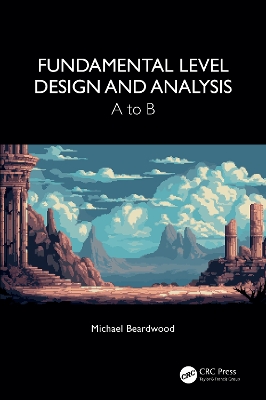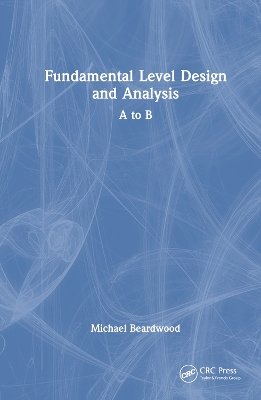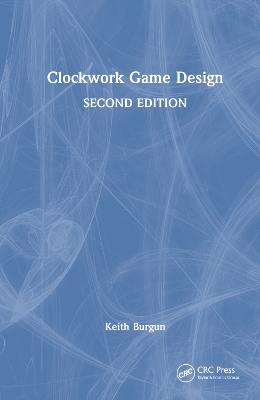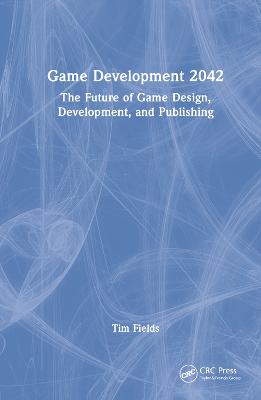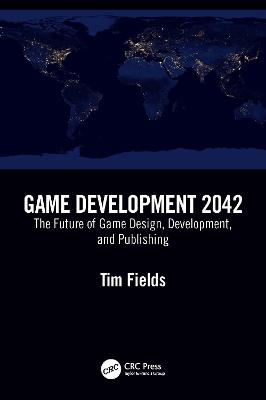Game Audio Programming 2
 portes grátis
portes grátis
Game Audio Programming 2
Principles and Practices
Somberg, Guy
Taylor & Francis Ltd
08/2022
390
Mole
Inglês
9781032401799
15 a 20 dias
721
Descrição não disponível.
Chapter 1: Lifecycle of Game Audio
Chapter 2: A Rare Breed: The Audio Programmer
Section 1: Low-Level Topics
Chapter 3: Multithreading for Game Audio
Chapter 4: Designing a Channel-Agnostic Audio Engine
Chapter 5: Audio Resampling
Chapter 6: Introduction to DSP Prototyping
Chapter 7: Practical Applications of Simple Filters
Section 2: Middleware
Chapter 8: Advanced FMOD Studio Techniques
Chapter 9: Understanding Wwise Virtual Voices
Section 3: Game Integration
Chapter 10: Distance-Delayed Sounds
Chapter 11: Designs for Ambiences in Open-World Games
Chapter 12: Approximate Position of Ambient Sounds of Multiple Sources
Chapter 13: Techniques for Improving Data-Drivability of Gameplay Audio Code
Chapter 14: Data-Driven Sound Limitation System
Chapter 15: Realtime Audio Mixing
Chapter 16: Using Orientation to Add Emphasis to a Mix
Chapter 17: Obstruction, Occlusion, and Propagation
Chapter 18: Practical Approaches to Virtual Acoustics
Chapter 19: Implementing Volume Sliders
Section 4: Music
Chapter 20: Note-Based Music Systems
Chapter 21: Synchronizing Action-Based Gameplay to Music
Chapter 2: A Rare Breed: The Audio Programmer
Section 1: Low-Level Topics
Chapter 3: Multithreading for Game Audio
Chapter 4: Designing a Channel-Agnostic Audio Engine
Chapter 5: Audio Resampling
Chapter 6: Introduction to DSP Prototyping
Chapter 7: Practical Applications of Simple Filters
Section 2: Middleware
Chapter 8: Advanced FMOD Studio Techniques
Chapter 9: Understanding Wwise Virtual Voices
Section 3: Game Integration
Chapter 10: Distance-Delayed Sounds
Chapter 11: Designs for Ambiences in Open-World Games
Chapter 12: Approximate Position of Ambient Sounds of Multiple Sources
Chapter 13: Techniques for Improving Data-Drivability of Gameplay Audio Code
Chapter 14: Data-Driven Sound Limitation System
Chapter 15: Realtime Audio Mixing
Chapter 16: Using Orientation to Add Emphasis to a Mix
Chapter 17: Obstruction, Occlusion, and Propagation
Chapter 18: Practical Approaches to Virtual Acoustics
Chapter 19: Implementing Volume Sliders
Section 4: Music
Chapter 20: Note-Based Music Systems
Chapter 21: Synchronizing Action-Based Gameplay to Music
Este título pertence ao(s) assunto(s) indicados(s). Para ver outros títulos clique no assunto desejado.
Playback;game design;Game Audio;audio;Audio Middleware;music;Sound Designer;sound;Const Float;Florian Fuesslin;Int;Stephane Beauchemin;Const Vector3;Dan Murray;Audio Assets;Ethan Geller;Game Audio Engine;Jorge Garcia;Sound Emitter;Nic Taylor;Int Samplerate;Kory Postma;Sound Travels;Matthieu Dirrenberger;Low Level API;Jon Mitchell;Game Parameters;Akihiro Minami;Vice Versa;Yuichi Nishimatsu;Virtual Voice;Tomas Neumann;Attenuation Range;Robert Bantin;Dense;Michael Filion;Distance Delay;Nathan Harris;Sync Point;Charlie Huguenard;Midi Note;Colin Walder;Open World Games;Midi Note Number;Mixer Interface;Private Void
Chapter 1: Lifecycle of Game Audio
Chapter 2: A Rare Breed: The Audio Programmer
Section 1: Low-Level Topics
Chapter 3: Multithreading for Game Audio
Chapter 4: Designing a Channel-Agnostic Audio Engine
Chapter 5: Audio Resampling
Chapter 6: Introduction to DSP Prototyping
Chapter 7: Practical Applications of Simple Filters
Section 2: Middleware
Chapter 8: Advanced FMOD Studio Techniques
Chapter 9: Understanding Wwise Virtual Voices
Section 3: Game Integration
Chapter 10: Distance-Delayed Sounds
Chapter 11: Designs for Ambiences in Open-World Games
Chapter 12: Approximate Position of Ambient Sounds of Multiple Sources
Chapter 13: Techniques for Improving Data-Drivability of Gameplay Audio Code
Chapter 14: Data-Driven Sound Limitation System
Chapter 15: Realtime Audio Mixing
Chapter 16: Using Orientation to Add Emphasis to a Mix
Chapter 17: Obstruction, Occlusion, and Propagation
Chapter 18: Practical Approaches to Virtual Acoustics
Chapter 19: Implementing Volume Sliders
Section 4: Music
Chapter 20: Note-Based Music Systems
Chapter 21: Synchronizing Action-Based Gameplay to Music
Chapter 2: A Rare Breed: The Audio Programmer
Section 1: Low-Level Topics
Chapter 3: Multithreading for Game Audio
Chapter 4: Designing a Channel-Agnostic Audio Engine
Chapter 5: Audio Resampling
Chapter 6: Introduction to DSP Prototyping
Chapter 7: Practical Applications of Simple Filters
Section 2: Middleware
Chapter 8: Advanced FMOD Studio Techniques
Chapter 9: Understanding Wwise Virtual Voices
Section 3: Game Integration
Chapter 10: Distance-Delayed Sounds
Chapter 11: Designs for Ambiences in Open-World Games
Chapter 12: Approximate Position of Ambient Sounds of Multiple Sources
Chapter 13: Techniques for Improving Data-Drivability of Gameplay Audio Code
Chapter 14: Data-Driven Sound Limitation System
Chapter 15: Realtime Audio Mixing
Chapter 16: Using Orientation to Add Emphasis to a Mix
Chapter 17: Obstruction, Occlusion, and Propagation
Chapter 18: Practical Approaches to Virtual Acoustics
Chapter 19: Implementing Volume Sliders
Section 4: Music
Chapter 20: Note-Based Music Systems
Chapter 21: Synchronizing Action-Based Gameplay to Music
Este título pertence ao(s) assunto(s) indicados(s). Para ver outros títulos clique no assunto desejado.
Playback;game design;Game Audio;audio;Audio Middleware;music;Sound Designer;sound;Const Float;Florian Fuesslin;Int;Stephane Beauchemin;Const Vector3;Dan Murray;Audio Assets;Ethan Geller;Game Audio Engine;Jorge Garcia;Sound Emitter;Nic Taylor;Int Samplerate;Kory Postma;Sound Travels;Matthieu Dirrenberger;Low Level API;Jon Mitchell;Game Parameters;Akihiro Minami;Vice Versa;Yuichi Nishimatsu;Virtual Voice;Tomas Neumann;Attenuation Range;Robert Bantin;Dense;Michael Filion;Distance Delay;Nathan Harris;Sync Point;Charlie Huguenard;Midi Note;Colin Walder;Open World Games;Midi Note Number;Mixer Interface;Private Void

